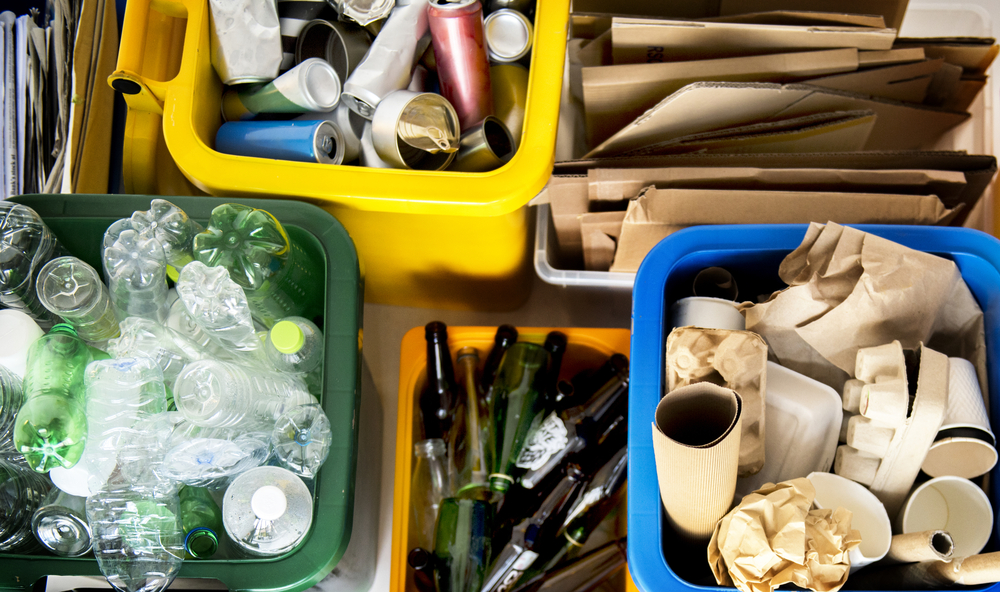The research into AI-assisted waste disposal began as my dissertation for the MSc in Robotics Engineering at the Robotic Lab, Liverpool Hope University.
Initially, the focus was on the extent of the problem itself. Firstly, we gained an understanding of the number of solid waste products being produced, and then how much of the waste was being recycled. The statistics for this were truly shocking as we discovered that only around 40% of the waste that consumers attempt to recycle is actually recycled with the remaining 60% being sent to landfills mainly due to the inadequacies in the sorting of waste at the Material Recovery Facilities (MRF). Moreover, these figures are only for waste that consumers are attempting to recycle as many thousands of tons of solid waste are simply released into the environment with obvious detrimental effects.
There have been great efforts in the retrieval of solid waste from the environment, such as the seavax system. However, these systems do not discriminate between the classes of waste they collect, and with this, the question arose, “Do we have the capacity to handle such an increase in waste?” The short answer is “No, we do not,” as we cannot effectively handle the waste we are already sending to the MRF, again, with approximately 60% being sent to landfill.
Therefore, the research objective was to develop a multipurpose system that could be both used in the MRF for sorting and to intelligently retrieve solid waste from the environment, i.e. sort at the collection stage to reduce the pressure on the already strained MRF’s.

The artificial intelligence-based system aims to reduce the amount of solid waste being sent to landfills. Image Credit: Rawpixel.com/Shutterstock.com
Can you tell us about your low-cost sorting system and how it has been developed?
The system was built using a Raspberry PI as the embedded platform using a high-resolution optical sensor to capture images to be processed and inferred upon.
The system has two modes of operation:
- Single capture and inference to be used within the MRF for sorting
- Continuous capture and inference to be used for intelligent retrieval
Both modes work in more or less the same way, where an image is captured, processed using OpenCV, and inferred upon with Tensorflow. The inference results are then outputted with a confidence score.
The accuracy of the system was up to 92%. However, this did drop to 76% when deployed due to the varying light intensities and the lens's focusing on the optical sensor.
The baseline speed on the windows machine was around 10 frames per second (fps), which did drop significantly to 1.4 fps when deployed. Unfortunately, this meant that the system would not be suitable for intelligent retrieval, but would be perfectly adequate for sorting within the MRF.
The biggest surprise, however, was the low £70 cost of the system. This was achieved mainly due to the hardware being readily available and cheap. All the software required was a free and open source. However, as this was only a prototype, the cost could be significantly reduced if the system was put into production.
The system was developed using a class of efficient models called mobileNets. These models are specifically designed computer vision models for use on hardware that has significant constraints on memory and processing power such as mobile devices and embedded platforms. They are based on an efficient architecture that utilizes depth-wise separable convolutions to build streamlined deep networks and introduce two hyperparameters that efficiently tradeoff between speed and accuracy.
The model was trained using a combination of two datasets Trashnet and Images taken from Google Images. TrashNet contains a total of 2,500 images of the five recycling classes. These were combined with the 1,000 images from Google Images, making a dataset with 35,000 images in total. Each of these images was then labeled with a description of the relevant recyclable class, their location and size in terms of pixels, and pixel coordinates using software called labelImg.
The training method employed was transfer learning. Transfer learning is the idea of overcoming the isolated learning paradigm where we utilize the knowledge acquired for one task to solve a related one. For example, as humans, we learn how to ride a bicycle and we can utilize this knowledge, or transfer this knowledge, to learning how to ride a motorcycle. The motivation behind transfer learning is increasing research into True Artificial General Intelligence (AGI).
In what way will this system reduce the amount of solid waste going to landfills?
If the system was integrated with other equipment, such as robotic arms, removing the human and mechanical elements within the sorting process, it would significantly reduce the contamination (mixing of waste) as the human error and inadequacies of the mechanical elements would be removed. Therefore, less contamination leads to more materials being recycled and less going to landfill.
Is there capacity for the object detection system to be easily integrated with other equipment?
Due to the system being deployed on the raspberry pi, it could be very easily integrated with other equipment via the onboard GPIO or, more likely serial (USB). However, more work would be needed to utilize these communication methods.
Is there a potential for this to be adopted throughout the UK and across the world? What are the challenges that may be faced and how could these be overcome?
Yes, potentially, this could be adopted across the globe. However, the initial cost of the other equipment needed, such as robotic arms and so on, would be an issue. But, this is an initial outlay and as the system would remove human elements it would save on costs in the long run.
Rapid urbanization, increasing populations and industrialization is further increasing solid waste pollution across the world. Why will adopting this type of technology help to deal with these issues?
Unfortunately, this system would not help with the increasing amounts of solid waste being produced and released across the globe, however, the system has the potential to significantly reduce the amounts that we are sending to landfill and, therefore increase the amounts that we can re-use.
What challenges have you faced when developing the AI system?
As with any AI system, the biggest challenge was acquiring the amount of data required and the preparation of the data, such as labeling the data (images) which took around two weeks on and off.
What are the next steps for the project?
The next steps for the project would be, firstly, to integrate the system with a robotic arm and then to deploy the system on a more robust platform to facilitate intelligent retrieval.
Where can readers find more information?
K. Myers, E.L. Secco, A Low-Cost Embedded Computer Vision System for the Classification of Recyclable Objects, Congress on Intelligent Systems (CIS - 2020)
About Karl Myers and Emanuele Lindo Secco
Karl Myers
Currently, I am working for a private education company called Study Group as a project tutor focusing on Engineering, Robotics and Computer Science. Study Group are a pathway provider for international students to study abroad where we teach them English and also foundation qualifications in their chosen area of study.
I work (or teach) on behalf of 43 universities across the globe, again, focusing on Engineering, Robotics and Computer science. This could be to both undergraduate and pre-masters students.

Emanuele Lindo Secco
I am Senior Lecturer in Robotics. I received a MSc in Engineering in 1998 and a PhD in Bio-Engineering & Medical Computer Science in 2001, Italy. From 2003 to 2014, I worked at RIC (USA), UNIBO (IT), Eucentre (IT), and KCL (UK). In 2015, I joined the School of Mathematics, Computer Science and Engineering at Liverpool Hope University. My main interests are robotics, life-like systems, and wearable technologies.

Disclaimer: The views expressed here are those of the interviewee and do not necessarily represent the views of AZoM.com Limited (T/A) AZoNetwork, the owner and operator of this website. This disclaimer forms part of the Terms and Conditions of use of this website.